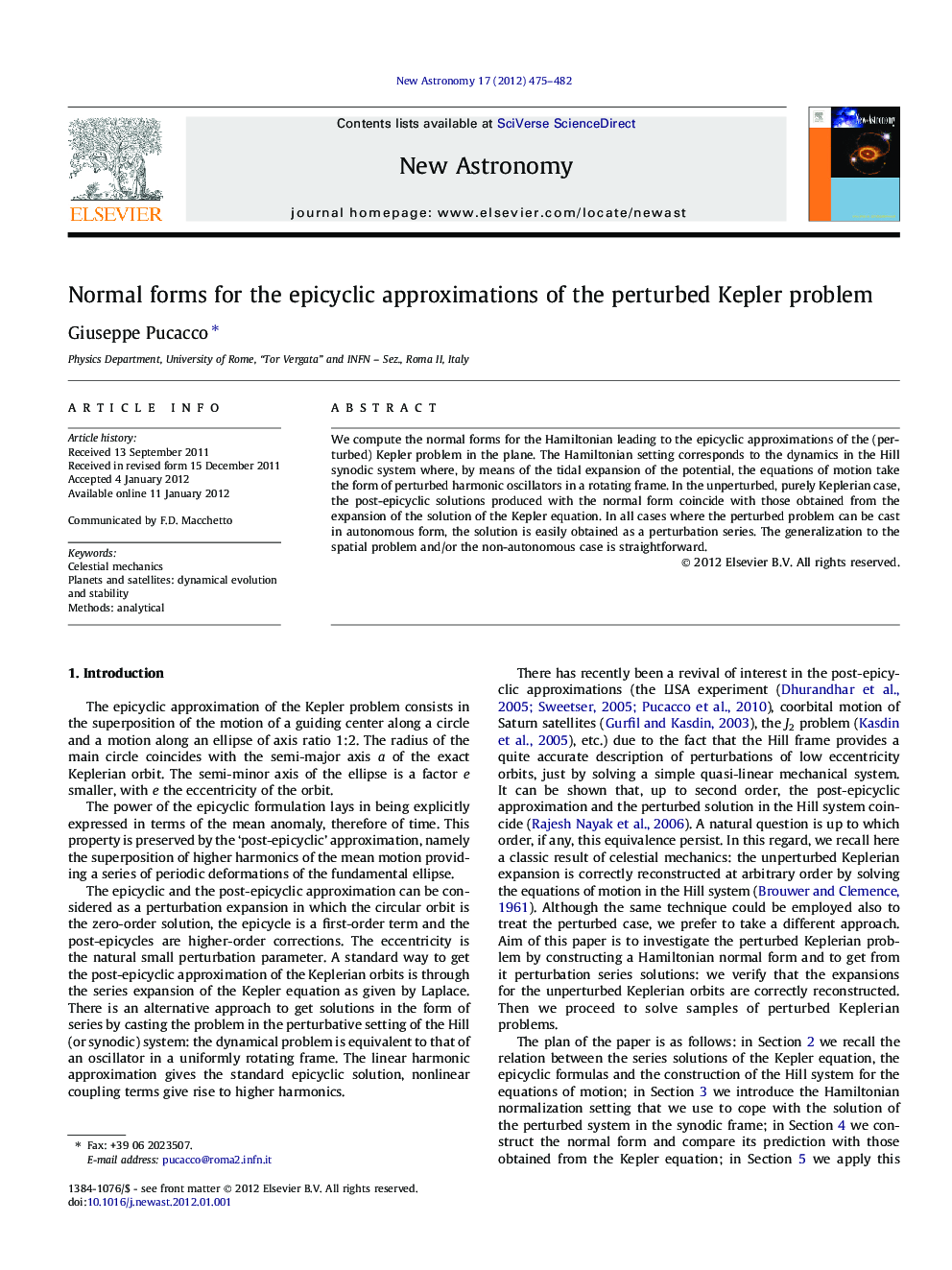| Article ID | Journal | Published Year | Pages | File Type |
|---|---|---|---|---|
| 1779267 | New Astronomy | 2012 | 8 Pages |
We compute the normal forms for the Hamiltonian leading to the epicyclic approximations of the (perturbed) Kepler problem in the plane. The Hamiltonian setting corresponds to the dynamics in the Hill synodic system where, by means of the tidal expansion of the potential, the equations of motion take the form of perturbed harmonic oscillators in a rotating frame. In the unperturbed, purely Keplerian case, the post-epicyclic solutions produced with the normal form coincide with those obtained from the expansion of the solution of the Kepler equation. In all cases where the perturbed problem can be cast in autonomous form, the solution is easily obtained as a perturbation series. The generalization to the spatial problem and/or the non-autonomous case is straightforward.
► We model autonomous perturbations of the Kepler problem in the synodic reference system. ► We apply the Hamiltonian normal form perturbation method to solve the equations of motion. ► We reconstruct the epicyclic expansion of the Kepler problem and solve for their perturbations. ► Accurate predictions of several precession effects are given. ► Generalizations to additional problems are discussed.
